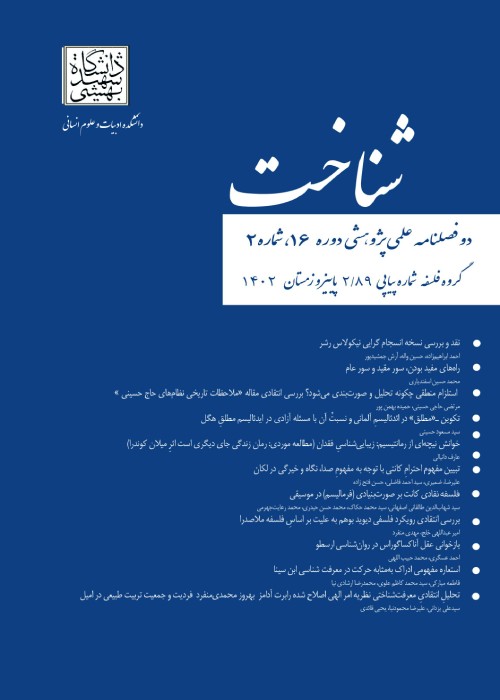Clarifying the Role of Elme-Badie (Persian Rhetoric) as the Starting Point in Iranian and Islamic Aesthetics
True questioning of Iranian and Islamic Aesthetics is the first step to reach better understanding of this field of study. In interpreting “art” and “beauty” we need to avoid prescriptive approaches, over generalizations, giving unnecessary holy meanings or basing our investigations on finding synonyms of “art” and “beauty” in ancient or classic texts. Normally, discussions on Iranian art and culture’s fundamental principles and theory start with finding synonyms of art and beauty in classic texts, without considering the fact that the meaning of these words have changed during the history, and also there is a fundamental theoretical difference between traditional and contemporary art. In contemporary aesthetics beauty and art is subjective and related to hand made human objects while in mystic approach (traditional one) beauty and art are supposed to be an ontological and existential products of God who creates nothing but beauty. Instead, we need to see the problem realistically through methodologically problem-based approach. The present study is about to avoid the usual starting point for finding the theoretical foundations of Islamic and Iranian Art and Aesthetics; i.e., finding the synonyms of “art” and “beauty” in mystic texts. We should consider the fact that beauty in classic and theoretical texts is considered to be an ontological characteristics of the world in general while in the contemporary world beauty is mostly considered as subjective feature. Iranian art is mostly decorative in architecture, and narrative in painting and illustration, and finally romantic and didactic in literature. Among these arts, we can only find some theoretical discussions in literature regarding the interpretation of beauty and evaluating the works of art (literary texts). Such discussions are gathered under the name of “Elme Badie” that is somehow synonyms with the meaning of rhetoric. Elme Badie is able to describe, and interpret all figures of speech with extended examples and advanced terminology. It seems that this field of study should be revived and used as the first step in aesthetics studies in order to understand the taste of Iranian and Islamic taste of beauty and art. Any investigation in Islamic or Iranian aesthetics ought to start from this first step to be able to formulate the problem realistically and methodologically. In fact, this paper proposes that instead of finding the roots of Persian Aesthetics, i.e., discussions on art and beauty in Islamic mystic texts, we should consider the fact that Persian Rhetoric or Elme Dabie has established itself as a alternative aesthetic theory; however, it remained mainly focused on literary discussions. Persian Rhetoric has long obsessive discussions on defining literary terms and finding proper examples for them. There are number of reasons why Persian Rhetoric never involved with aesthetics as the theory of visual arts like religious barriers, and authoritarian structure of the states who always encouraged conservative romantic and didactic literature instead of visual arts. Therefore, we can surely say that Persian Rhetoric developed to be an alternative theory of aesthetics in a social and political conditions where comprehensive aesthetics theory was not possible.
- حق عضویت دریافتی صرف حمایت از نشریات عضو و نگهداری، تکمیل و توسعه مگیران میشود.
- پرداخت حق اشتراک و دانلود مقالات اجازه بازنشر آن در سایر رسانههای چاپی و دیجیتال را به کاربر نمیدهد.



